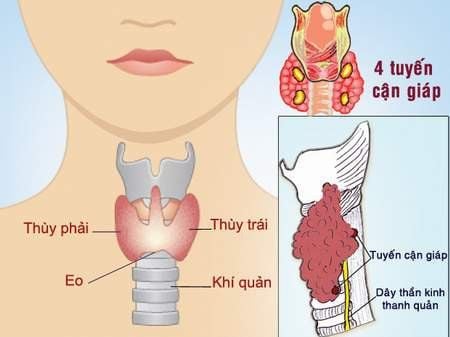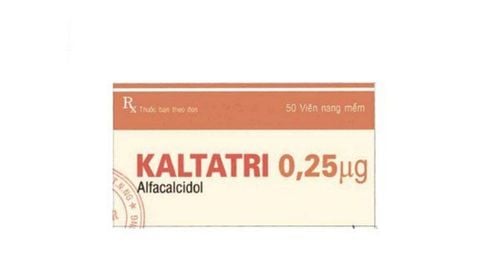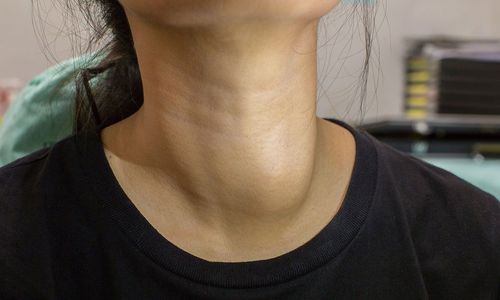This is an automatically translated article.
The article was professionally consulted with General Internal Medicine Doctor - Department of Examination & Internal Medicine - Vinmec Nha Trang International General Hospital.The thyroid gland is located at the front of the neck, shaped like a butterfly, and is the largest and most important endocrine gland in the body. This is the location where tumors and tumors often appear, including thyroid patients. If detected and treated promptly, thyroid patients have good results and prognosis. However, thyroid nodules often form quietly and are difficult to detect.
1. What is thyroid nodule?
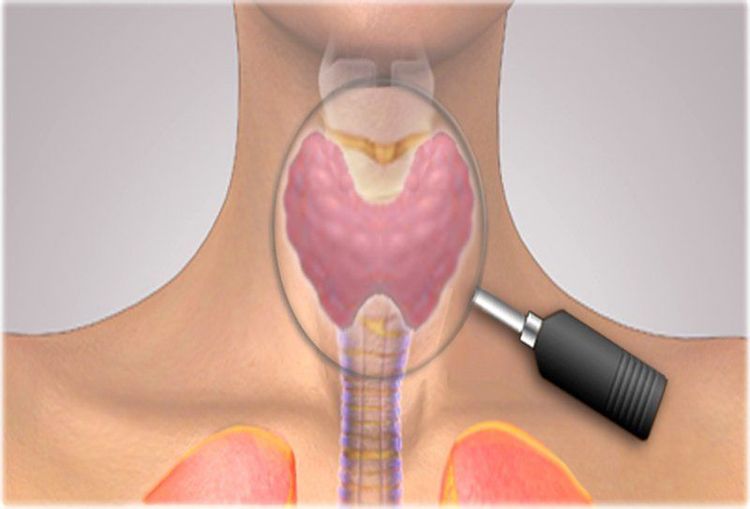
Although the majority of thyroid nodules are benign (noncancerous). A small percentage of these nuclei contain cancer cells. To diagnose and treat thyroid cancer in its earliest stages, it needs to be correctly diagnosed by a specialist.
Most cases are benign thyroid nodules, a small percentage are detected malignant thyroid nodules. Therefore, when there are symptoms of the disease, it is necessary to visit a specialist so that the doctor can accurately diagnose, detect early nodules or cancer for timely treatment.
Trắc nghiệm: Hiểu biết của bạn về tuyến giáp đến đâu?
Tuyến giáp đóng vai trò gì đối với cơ thể, tại sao phụ nữ thường gặp các vấn đề về tuyến giáp nhiều hơn nam giới? Đó là những thắc mắc thường gặp khi tìm hiểu về tuyến giáp. Hãy làm thử trắc nghiệm dưới đây để kiểm tra hiểu biết của bạn về tuyến giáp đến đâu nhé!
Bài dịch từ: webmd.com
2. Types of thyroid nodules
Thyroid tumors are of two types: mononodular and multinodular thyroid nodules.Usually, patients only feel the large nodules, located near the surface, while the small nodules less than 1 cm in diameter are difficult to detect on manual examination and must be diagnosed by ultrasound. Most thyroid nodules are benign, progressing very slowly, making it difficult to detect.
This is a common disease, through clinical examination, it is detected in about 4-7% of the population, the incidence in women is 5 times higher than in men. The detection rate through ultrasound is much higher, from 19 to 67%. The most common age group is between 36 and 55 years old.
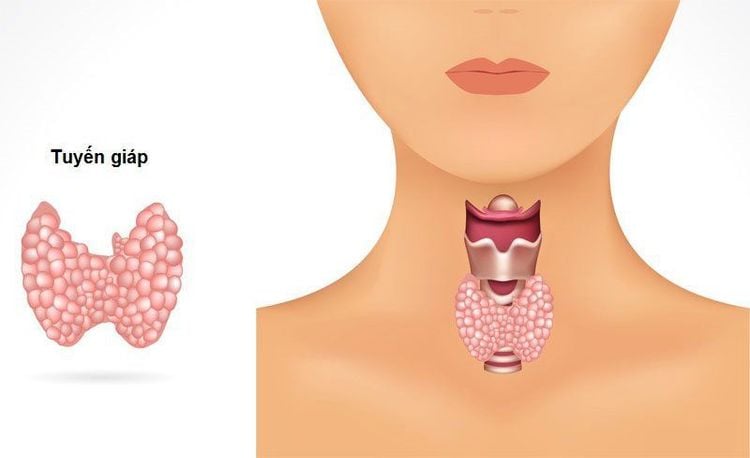
3. Common symptoms of thyroid nodules
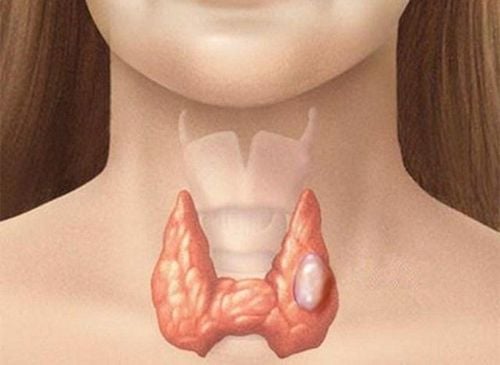
Sometimes, patients self-detect thyroid nodules when looking in the mirror to see that the neck is larger, buttoning the collar or wearing a necklace. Abnormal thyroid function test results may be the reason for detecting a thyroid nodule. Thyroid nodules can produce too much hormone that causes hyperthyroidism.
However, most thyroid nodules, including thyroid cancer, do not usually affect thyroid function. That means the TSH test is normal. In rare cases, patients with adenocarcinoma may experience neck, jaw, or ear pain. If the thyroid nodule is large enough to press on the trachea or esophagus, the patient may experience difficulty breathing, swallowing, or a feeling of tightness in the throat, hoarse voice. Even less commonly, the patient may be hoarse. If the thyroid nodule invades the nerves that supply the vocal cords, it is usually due to thyroid cancer.
Therefore, it is important to remember:
Thyroid nodules often cause no symptoms; Thyroid function tests are usually normal even in the presence of cancer; The best way to detect a thyroid nodule is to have your doctor examine your neck. When the thyroid nodule is overactive, it increases the production of thyroid hormone, causing metabolic disorders in the body. At that time, the patient's body often shows some symptoms of thyroid dysfunction such as: trembling hands, heart palpitations, palpitations, sweating, insomnia, body fatigue, muscle weakness. , lost weight,...
4. Are thyroid nodules dangerous?
Most cases are benign nodules. In order to accurately determine whether it is a benign or malignant thyroid nodule, the patient is carried out a number of diagnostic measures to evaluate the thyroid nodule.When there are signs of suspected thyroid nodule, the doctor will conduct an ultrasound of the neck to determine the exact location, size and number of thyroid nodules, whether they are solid or fluid-filled cysts. Ultrasound also helps to identify thyroid nodules that are highly cancerous and aids in performing the FNA procedure accurately.
Then, to accurately determine whether it is a benign or malignant nodule, it is necessary to aspirate thyroid cells with a fine needle under the guidance of ultrasound, the doctor conducts a fine needle into the nodules to remove Cell samples are examined under a microscope, looking for malignant cells.
Biopsy results can be:
Malignant (positive): accounting for about 4-5% of cases, the tumor can be in papillary, cystic, medullary and undifferentiated forms; Benign (negative): accounting for about 69-74%, nodular goiter in forms such as colloid goiter, subacute thyroiditis, Hashimoto's thyroiditis, thyroid cyst; Unspecified (suspected): Follicular hyperplasia, Hurthle cell hyperplasia or suspected (but not confirmed) cancer; Undiagnosed or incomplete: Accounts for about 5% of ultrasound-guided biopsies. This result is because the FNA procedure does not remove many thyroid nuclei (common in cystic thyroid nodules). In this case, a second FNA or surgery is usually required, depending on the doctor's assessment. There are also diagnostic methods to evaluate thyroid nodules with high value such as thyroid scintigraphy, biochemical tests.
5. Treatment methods for thyroid nodules
After having an accurate diagnosis, depending on the characteristics of the cytology results of thyroid cells, the doctor will choose the right treatment method for the patient. Treatment methods for thyroid nodules may include:Treatment with Thyroxine: Usually applied to patients with small thyroid nodules, colloid goiter and definitely not malignancy; Surgery to remove thyroid nodules: Indications for surgery for cases of cancer or suspected based on cytological results or too large goiter causing compression. Surgical removal of thyroid nodules:
Radioactive iodine treatment: Applied in patients with active nodules, which may be accompanied by hyperthyroidism; Percutaneous alcohol injection: Used to treat solid or cystic or mixed tumors; Using products to support the treatment of thyroid nodules: Currently, on the market, there are many products that have the effect of destroying thyroid tumors, patients should choose and use according to the doctor's prescription. Benign thyroid nodules should be monitored regularly with ultrasound every 6-12 months and with an annual clinical examination, possibly with FT4, TSH, or aspiration cytology if needed. After treatment, patients need to be periodically monitored to assess the recurrence of goiter and evaluate the status of hypothyroidism for appropriate monitoring and treatment measures.
Please dial HOTLINE for more information or register for an appointment HERE. Download MyVinmec app to make appointments faster and to manage your bookings easily.




